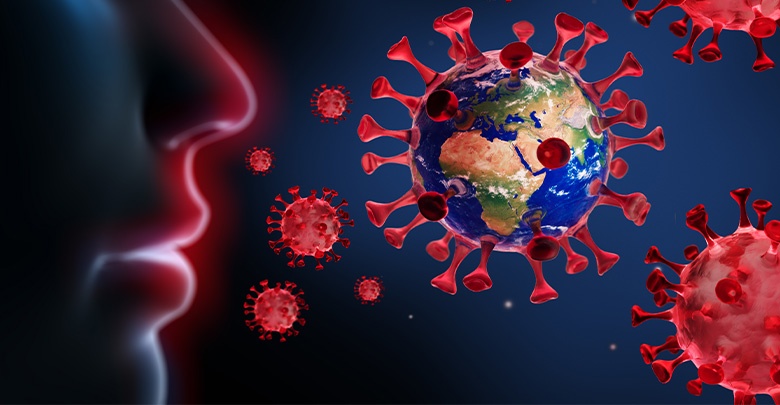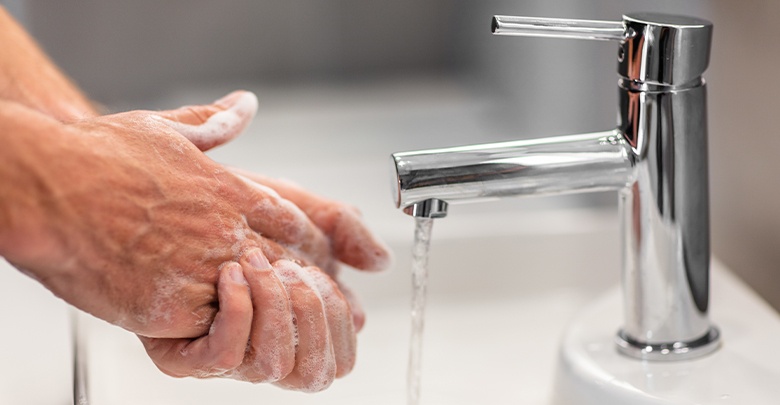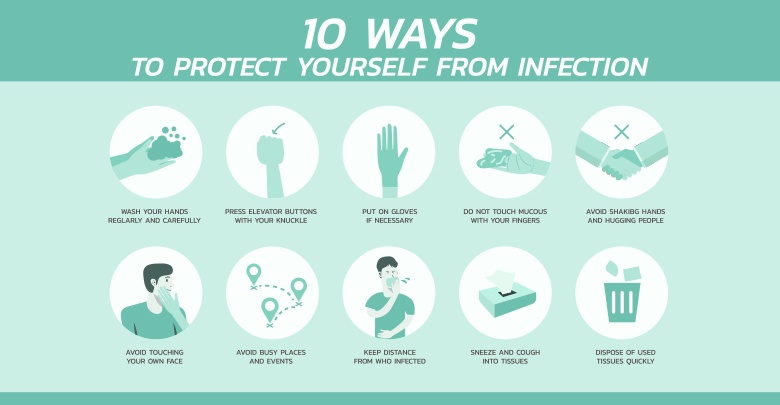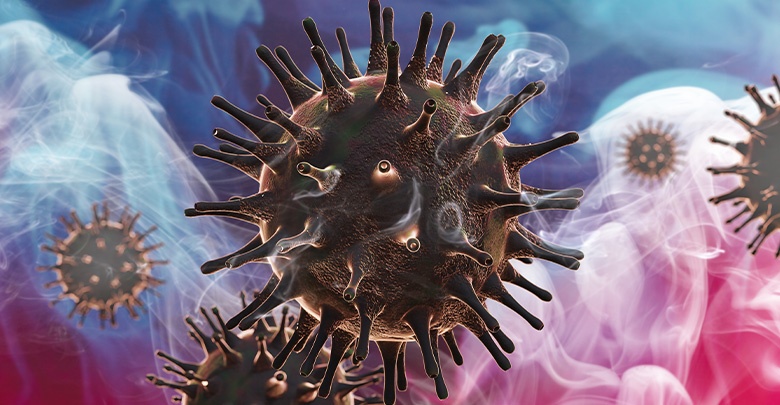What we know so far
With the coronavirus pandemic raging, it’s important for each person to better understand what we, as a globe, are dealing with

With the coronavirus pandemic raging, it’s important for each person to better understand what we, as a globe, are dealing with
USE the OMH exclusive code "HEALTH15" to Save 15%About the coronavirus – Covid-19
Covid-19 is the name of the disease, which is caused by a “new version” (SARS-CoV2) of a coronavirus, which humans have never been exposed to before. The virus was transferred to humans from animals. It first broke out in Wuhan, China, with the first case of Covid-19 (which is the name for the actual disease caused by the coronavirus) reported on the 24 December 2019.
How can you catch the coronavirus?
According to the research based on the data from the first cases in Wuhan, the coronavirus is mostly transmitted through contact, especially between family members, close contacts and healthcare professionals who are exposed to the infected person. The coronavirus is spread mostly through respiratory droplets. In other words when an infected person coughs or sneezes in close proximity to another person, the infected droplets are then inhaled, thus enabling the virus to enter the other person’s system where the virus then replicates and causes Covid-19 symptoms.
Recent research led by Dr. Vincent Munster of NIH’s National Institute of Allergy and Infectious Diseases (NIAID) studied how long the virus can survive on various surfaces and in the air. They tested the viruses on cardboard, plastic, copper and stainless steel. They also used tested how long the virus could linger in the air.
The scientists findings indicated that the SARS-CoV2 virus remained active, under the conditions of this experiment, on the following surfaces for the following amount of time:
- Plastic 2 – 3 days
- Stainless steel 2 – 3 days
- Cardboard up to 24 hours
- Copper up to 4 hours
- Detectable in aerosols for up to 3 hours
The scientists did say that these times will vary in real world conditions, depending on factors including the amount of virus deposited, temperature, humidity and ventilation.
The important thing to remember is that you would need to touch the surface, where, assuming there was sufficient active virus, it would be transferred to your hands. You would then need to touch your nose, mouth or eyes in order for the virus to possibly enter your system.
The important elements to take from these findings are:

- Social distancing is important to prevent infection – stand at least 6 feet away from each other to prevent droplet transmission from a cough or sneeze
- Avoid physical contact – this includes shaking hands, hugging, kissing, etc
- Wash your hands regularly, for 30 seconds at least with warm water and soap (normal soap will suffice) as this kills the virus. It is important to wash your hands whenever you go out, shop, have touched or handled anything not your own.
- Disinfect any frequently touched surfaces such as door handles, light switches, counters, credit cards, your phone etc. This can be done using normal household cleaning spray.
- Avoid touching your nose, mouth or eyes
- Stay home
- If you are showing any symptoms stay home, self isolate, wear a mask to protect others from your cough or sneeze, flush used tissues down the toilet, and wash your hands to avoid spreading the virus.

How long before you start showing signs of coronavirus infection?
Generally the incubation period (how long it takes before someone starts to show symptoms of Covid-19) is 3-7 days from exposure to the virus. This incubation period can however be up to 12.5 days.
According to virologist Dr Christian Drosten, infected individuals are contagious 2.5 days before presenting with symptoms of Covid-19
Due to the incubation period, and the fact that a person can be contagious 2.5 days before they even start showing symptoms, many countries have introduced self isolation and lockdowns as a way to slow the spread of the virus. This is also why people who have been exposed to Covid-19 positive patients are told to self isolate for 14 days, in order to be sure that they do not develop symptoms of Covid-19 themselves, and pass it on.
The symptoms of Covid-19 include the following:
- Fever (present in 83 – 98% of cases)
- Cough (present in 46 – 82% of cases)
- Shortness of breath (present in approximately 31% of cases)
- Fatigue or muscle aches (present in 11 – 44%)
- Less common symptoms include stuffy nose, headaches, sore throat; even abdominal pain and diarrhea have been reported.
- Recent data shows that a lack of sense of smell (anosmia) may be a symptom of Covid-19 infection. In South Korea were testing was extensive; up to 30% of those infected with Covid -19 experienced a loss of sense of smell.
Mild vs severe Covid-19
Scientists do not really have accurate data to work with, due to not everyone being tested for the coronavirus. In fact most people with mild symptoms of Covid-19 will never be tested due to a lack of available test kits, and the expense of testing. This causes data to be hugely skewed towards the more serious cases. However, it appears that about 80% of those infected will develop a mild chest cold.
20% of those infected are predicted to have a moderate to severe disease course. Unfortunately of these severe cases, a very small percentage may develop viral or bacterial pneumonia, or multiple organ failure due the body’s exhausted defence mechanisms later in the disease. Pneumonia may require hospitalisation and respiratory support – which may simply mean supplemental oxygen, or in severe cases mechanical ventilation, or ECMO may be necessary. Multiple organ failure always requires intensive care treatment.
Risk factors associated with coronavirus infection
Age
People over the age of 60 have a higher risk, but most of the risk of dying lies in the 80+ age group. There have not been any recorded deaths in children 0-9 years old.
Pre-existing medical conditions such as
- cardio-vascular disease
- diabetes
- chronic respiratory disease
- hypertension
- cancer
- immune compromised patients
Risk of dying – this data is gathered from statistics of known cases. If you develop Covid-19, your risk of dying is:
- no fatalities in 0 -9 years old
- 0.2% for those aged 10-39
- 0.4% for those aged 40 – 49
- 1.3% for those aged 50 – 59
- 3.6% for those aged 60-69
- 8.0% for those aged 70 – 79
- 14.8% for those aged 80+ years old
Healthcare facilities
Another factor to consider is that in countries or cities with already stretched medical and healthcare facilities, the risk of dying increases due to a lack of sufficient medical care facilities – for example medical professionals, ICU beds, ventilators and oxygen. Another factor is that in countries where insufficient testing is being carried out, there is little or no tracing of, or isolation of positive cases. This leads to an uncontolled spread of the virus.
Response by the community or country to the coronavirus
In countries where governments are enforcing travel bans, self isolation, lockdowns and forcing people to stay at home, the spread of the virus is slowed down. This leads to “flattening the curve” which in essence means that the spread of the virus is slowed down, enabling the healthcare facilities to more effectively treat those critically ill, thereby reducing the death rate.
How many people will be infected with the coronavirus?
The projections about how many people may become infected from one infected person vary widely. Some reports say that on average every infected person will infect 1.3 people. Others say one infected person may infect up to 6.5 people on average. The data remains unclear,
Once again the “ guestimates” around how many people will probably be infected by the coronavirus, have ranged widely from initial alarming percentages of “40 – 70%” of the population, which was then down graded to a revised estimate of “20 – 60%” of adults. An interesting case for this was the cruise ship The Diamond Princess, which was the worst-case scenario. Even with the perfect conditions for the virus to spread, only 20% of all the people on board were infected with the coronavirus.
According to a recent research article, it is estimated that 86% of cases in China, prior to lockdown on the 23 January 2020 were undocumented. It is also estimated in the same research that these undocumented cases were responsible for 79% of the documented cases.
Young vs old in coronavirus infections
The younger, healthier population are much more likely to have mild symptoms, and their risk of becoming seriously ill, requiring medical intervention or dying are extremely low. However, it is very important to remember that a young healthy person may not even realise they have the coronavirus and may infect other people who could be vulnerable to a serious disease course.
What to do if you think you may have the coronavirus

It is very important that you follow the protocols specific to your city or country relating to mitigating the risks of the coronavirus, and spreading the virus. Please remember that we are merely providing information on this site, and that you should consult with a doctor if you suspect you may have the coronavirus. Many countries now have dedicated hot lines, which you can call if you are showing symptoms.
If you experience any of the above symptoms you should consider yourself contagious, and should limit contact with other people. Please be sure to contact the relevant authorities. If medical intervention is not necessary, then you should self-isolate in order to prevent the spread of the virus. Obviously if you are very ill, have shortness of breath, difficulty breathing or are at high risk for developing severe symtoms, then you must seek medical treatment. Many countries request that you call your health care professional in advance, prior to going to the doctor, in order to let them know of your symptoms and concerns that you may have the virus.
Treatment for Covid-19
Scientists are working on a vaccine for SARS-Cov2, but this will take time. Currently there are no specific antiviral treatments recommended for Covid-19. Treatment involves symptom management, and oxygen therapy represents the major treatment intervention for patients with severe infection. Mechanical ventilation, or even ECMO may be required in cases of respiratory failure. Hemodynamic support is essential for managing septic shock.
Although there are no approved antiviral treatments to date, several drug combination treatments have been proposed such as lopinavir/ritonavir. Scientists are studying the effectiveness of various drugs for the treatment of Covid-19. In Italy, an investigation led by the Istituto Nazionale Tumori, Fondazione Pascale di Napoli is focused on the use of tolicizumab, commonly used in the treatment of rheumatoid arthritis.
What about immunity?
According to virologist Dr Christian Drosten, once an individual has recovered from the Covid-19 infection, the person would then be immune to SARS-CoV2.
Regarding immunity, anti-body tests are being rapidly developed. These tests would be useful to individuals, so that they would then know whether they have indeed had Covid-19 and whether they are immune. This is important for medical professionals, and those working in esssential services. It would also enable immune individuals to visit and help the vulnerable populations, without fear of passing on, or catching the coronavirus.
Prevention as there is no cure
Due to the lack of treatment options available, preventative measures are the current strategy to flatten the curve, and limit the spread of the coronavirus. Preventive strategies are focused on the isolation of patients and careful infection control.
So please be safe. Maintain social distancing. Wash your hands regularly with soap and water. Cough and sneeze into a tissue or your elbow. If you are showing any symptoms of Covid-19, or have been exposed to someone who has been diagnosed, self isolate for 14 days. Minimise your contact with others. Protect the elderly, vulnerable and immune compromised. Together, in isolation, is the only way to keep Covid-19 under control.
Subscribe to stay current and sane
If you would like to receive regular updates, you can sign up for free in the top right corner of the website, to our mailing list. We will be publishing articles on coping strategies, mindfulness, boosting your immune system and exercising at home. We also have a wealth of free course material for our subscribers.
We have written articles on Immune Boosting Foods and Immune Boosting Strategies to help you stay healthy.
References
- van Doremalen N, Bushmaker T, Morris DH, Holbrook MG, Gamble A, Williamson BN, Tamin A, Harcourt JL, Thornburg NJ, Gerber SI, Lloyd-Smith JO, de Wit E, Munster VJ. Aerosol and Surface Stability of SARS-CoV-2 as Compared with SARS-CoV-1. N Engl J Med. 2020 Apr 16;382(16):1564-1567. doi: 10.1056/NEJMc2004973. Epub 2020 Mar 17. PubMed PMID: 32182409; PubMed Central PMCID: PMC7121658.
- Ioannidis JPA. Coronavirus disease 2019: the harms of exaggerated information and non-evidence-based measures. Eur J Clin Invest. 2020 Mar 23;:e13223. doi: 10.1111/eci.13223. [Epub ahead of print] PubMed PMID: 32202659.
- Li R, Pei S, Chen B, Song Y, Zhang T, Yang W, Shaman J. Substantial undocumented infection facilitates the rapid dissemination of novel coronavirus (SARS-CoV2). Science.2020 Mar 16;. doi: 10.1126/science.abb3221. [Epub ahead of print] PubMed PMID: 32179701; PubMed Central PMCID: PMC7164387.
- Cascella M, Rajnik M, Cuomo A, Dulebohn SC, Di Napoli R. Features, Evaluation and Treatment Coronavirus (COVID-19). 2020 Jan;. Review. PubMed PMID: 32150360.
- Prof. Christian Drosten, Antikörpentesten kommen bald, episode 21, 25.03.2020 https://podcasts.apple.com/ch/podcast/das-coronavirus-update-mit-christian-drosten/id1500424869?l=en#episodeGuid=AU-20200325-1318-5300-A
- www.thepaloemom.com, Natural Approaches to Cold & Flu Season (and Covid-19!).Published 2020.03.05 updated 2020.03.29. Dr Sarah Ballantyne PhD. https://www.thepaleomom.com/natural-approaches-to-cold-flu-season/
- www.cnbc.com, Flattening the coronavirus curve: What this means and why it matters.Published 2020.03.19. Sam Meredith. https://www.cnbc.com/2020/03/19/coronavirus-what-does-flattening-the-curve-mean-and-why-it-matters.htm